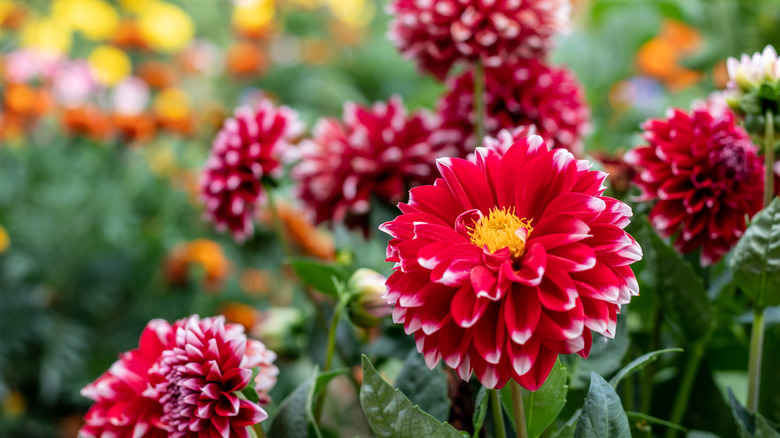Help Your Dahlia Blooms Thrive With This Important Task
Known for being a very popular flowering plant among gardeners, dazzling dahlia blooms have captured the hearts of horticultural enthusiasts around the world. These magnificent flowering plants are prized for their beautiful blooms which come in a diverse array of hues, shapes, and sizes. From the petite pompom to the dinner plate varieties, dahlias are a versatile and enchanting addition to any garden. But what sets dahlias apart isn't just their incredible beauty; it's their vigor and resilience that truly make them stand out. One way to ensure your dahlias are able to produce a good number of healthy blooms is by getting rid of their lower leaves.
Aside from being able to produce a profusion of flowers, dahlias are also known for their natural ability to transform any garden with their kaleidoscope of colors — that is, with a little extra care and attention, as exemplified in the practice of removing their lower leaves. You may wonder why such a seemingly insignificant task can make such a difference, and it all comes down to airflow and energy.
Why it's beneficial to remove the lower leaves of dahlias
Dahlia enthusiasts understand that tending to these glorious blooms goes beyond admiring their beauty. Proper care ensures that your dahlias reach their full potential, and that includes removing the lower leaves. By doing so, you allow air to circulate more freely around the plant. In turn, this improved airflow helps to keep your dahlias healthy and disease-free, preventing moisture buildup, a common trigger for fungal diseases like powdery mildew and botrytis.
Also, every leaf on a dahlia plant requires energy for maintenance. By removing the lower leaves, you direct the plant's resources and energy toward producing more flowers rather than supporting leaves that may not contribute significantly to photosynthesis. To do this, it's crucial to identify the lower leaves destined for removal before pruning, as demonstrated in the TikTok video of @romentaplants. These are the leaves closest to the ground and that often the first to show signs of stress or disease. Use clean, sharp scissors or pruning shears to snip the lower leaves. Aim to remove the ones touching the ground or those with discoloration, wilting, or signs of fungal growth. Make clean cuts to minimize stress on the plant.
The simple act of removing lower leaves is a critical step in ensuring your dahlias thrive. It not only helps maintain plant health but also aids in channeling energy towards producing those magnificent, vibrant blooms that make dahlias a perennial gardener's favorite.
